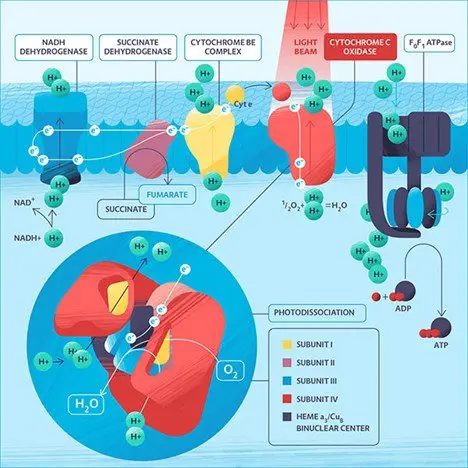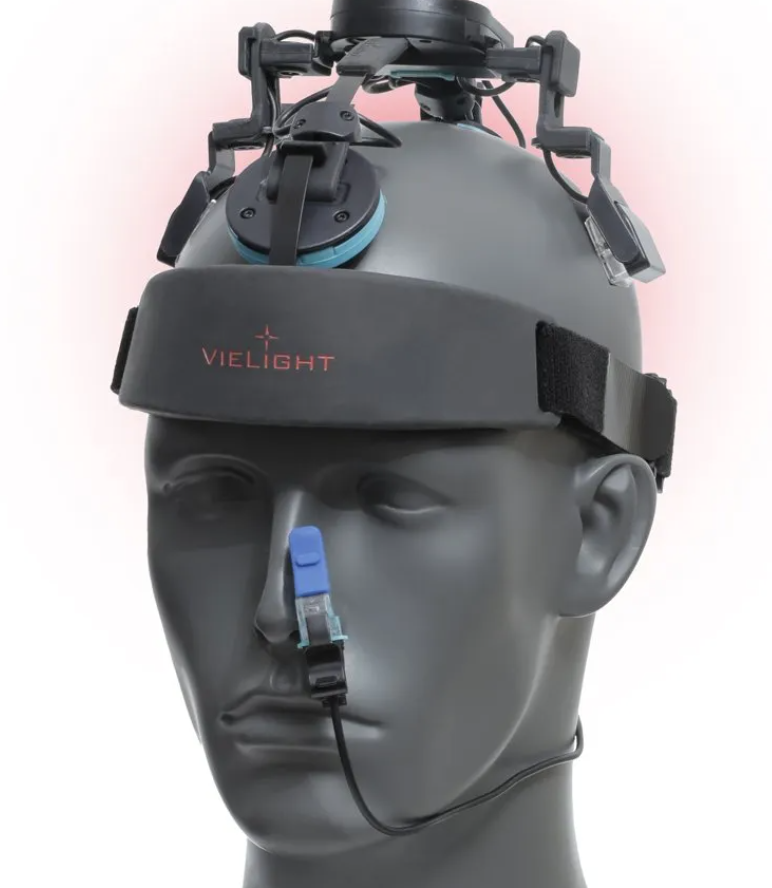

Shambhala Healing Tools
~ Etheric Weavers ~ Soul Thearpy Music
~ Sacred Geomancy ~ Solar Forms to wear ~ Maitreya Solar Cross ~ Head Pyramid
~ Planetary Solar Forms
~ Meditation Vajras ~ Healing Mat Systems ~ Meditation Pyramid Systems
scroll down to learn more
Red Light - Vielight Neuro Session
Description
As a powerful and well-researched transcranial brain photobiomodulation (tPBM) device with intranasal technology, the Vielight Neuro Alpha is a next-generation brain stimulation device that’s safe, effective and easy to use. Our patented transcranial-intranasal technology offers a unique and powerful advantage for comprehensive brain stimulation of the Default Mode Network.
The Neuro Gamma transmits pulsed near-infrared (NIR) energy through the cranium, activating a brain stimulation process known as photobiomodulation. Through efficient engineering, we are able to extract one of the highest amounts of power (~100-150 mW/cm2) from a near-infrared LED energy source without generating heat.
The Neuro Alpha pulses NIR energy at the 10 Hz frequency. This frequency is similar to neural alpha brain waves. Alpha waves are correlated with the brain’s resting state, offering support for mental coordination, mindfulness and learning. Athletes often cite the ‘flow’ state which has strong correlations with Alpha
What is Photobiomodulation?
Photobiomodulation therapy is defined as the utilization of non-ionizing electromagnetic energy to trigger photochemical changes within cellular structures that are receptive to photons.
Mitochondria is particularly receptive to red and near-infrared (NIR) photons. At the cellular level, visible red and near infrared light energy are absorbed by mitochondria, which perform the function of producing cellular energy called “ATP”.
The key to this entire process is a mitochondrial enzyme called cytochrome oxidase c, a chromophore, which accepts photonic energy of specific wavelengths when functioning below par.
Read a published study (May 2022) using the Vielight Neuro Alpha on the way that living cells, cellular structures, and components such as microtubules and tubulin respond to near-infrared PBM
What are the Mechanisms of Photobiomodulation?
There are three bioenergetics pathways in photobiomodulation.
Firstly, low level visible red to near infrared light (NIR) energy is absorbed by mitochondria and converted into ATP for cellular use.
Secondly, the process creates mild oxidants (ROS), which leads to gene transcription and then to cellular repair and healing.
Lastly, the process also unclogs the chain that has been clogged by nitric oxide (NO).[1] The nitric oxide is then released back into the system. Nitric oxide is a molecule that our body produces to help its 50 trillion cells communicate with each other. This communication happens by transmission of signals throughout the entire body. Additionally, nitric oxide helps to dilate the blood vessels and improve blood circulation.
What are the Pathways of Photobiomodulation?
- ATP (Adenosine Triphosphate) → cAMP (catabolite activator protein) → Jun/Fos (oncogenic transcription factors) → AP-1 (activator protein transcription factor stimulates gene transcription)
- ROS (Reactive Oxygen Series) → PKD (gene) → IkB (Inhibitor κB) + NF-κB (nuclear factor κB) → NF-κB (nuclear factor κB stimulates gene transcription)
- NO (Nitric Oxide)
What is Photobiology?
Photobiology is the study of the effects of non-ionizing radiation on biological systems. The biological effect varies with the wavelength region of the radiation. The radiation is absorbed by molecules in skin such as DNA, protein or certain drugs. The molecules are changed chemically into products that initiate biochemical responses in the cells.
Biological reaction to light is nothing new, there are numerous examples of light induced photochemical reactions in biological systems. Vitamin D synthesis in our skin is an example of a photochemical reaction. The power density of sunlight is only 105 mW/cm2 yet when ultraviolet B (UVB) rays strikes our skin, it converts a universally present form of cholesterol, 7-dehydrocholesterol to vitamin D3. We normally experience this through our eyes which are obviously photosensitive. Our vision is based upon light hitting our retinas and creating a chemical reaction that allows us to see. Throughout the course of evolution, photons have played a vital role in photo-chemically energizing certain cells.
What is brain photobiomodulation?
The brain is the most important and complex human organ. Within every brain cell are mitochondria, which are best understood as energy-producing “powerhouses” or “batteries”. Through biochemical reactions, the mitochondria create fuel for brain cells.
Your brain’s mitochondrial performance can be improved by absorbing light energy (photons) of specific wavelengths. This process is called photobiomodulation (PBM). Scientific research shows our brain’s mitochondria respond positively to light energy within the NIR wavelength range.
When NIR energy from, for example, a Vielight Neuro, is delivered to neuronal mitochondria, it is absorbed by a light-sensitive enzyme called cytochrome c oxidase. This enzyme uses NIR energy to start a series of biochemical reactions that are both beneficial and energizing to the neurons and other brain cells.
Penetration of Light Energy
Research and clinical studies show that when NIR light energy has sufficient power density, it is capable of penetrating biological tissue and bone to produce therapeutic outcomes without negative side effects.
What is NIR light energy?
Near infrared light (NIR) energy is part of the electromagnetic spectrum – which are waves (or photons) of the electromagnetic field.It radiates through space and carries electromagnetic radiant energy. Several existing technologies depend on the ability of electromagnetic energy to penetrate solid objects, such as WiFi, mobile data, radar and navigation satellites.

Figure 1 The electromagnetic spectrum
The depth or the power of penetration by light energy depends on the wavelength in the electromagnetic spectrum. Thus, the longer the wavelength, the greater the ability for photons to penetrate an object. NIR light energy is found around the center of the electromagnetic spectrum.
Why near infrared light energy for brain photobiomodulation?
The near infrared (NIR) window is the range in the electromagnetic spectrum where light has a maximum depth of penetration in tissue.[1] This is because the NIR window is defined by the absorption of photons by blood at the shorter wavelengths and by water at the longer wavelengths. NIR light energy also derives the greatest mitochondrial response out of the entire electromagnetic spectrum.

Figure 2 The near infrared window or body’s optical window. Image source: Wang, Erica & Kaur, Ramanjot & Fierro, Manuel & Austin, Evan & Jones, Linda & Jagdeo, Jared. (2019). Safety and penetration of light into the brain. 10.1016/B978-0-12-815305-5.00005-1.
In particular, visible light (wavelength 400 to 700 nm) is substantially absorbed by hemoglobin and other organic matter. On the other hand, absorption by water increases at wavelengths longer than near infrared light (1000+nm). This implies that wavelengths outside of the near-infrared window cannot penetrate deeply through tissue.
Example: “Fire!” When you hold your hand out to a burning fire you feel heat being emitted by the fire. What is happening? The fire emits infrared radiation, which the water molecules absorb in your skin. Then, this is perceived as heat because the nerves in your skin detect the raised temperature.
Penetration through the skull using NIR LED technology
Several independent published studies support the ability of NIR LED technology to penetrate the skull and irradiate the brain.[2], [3], [4] Lasers are not necessary and harbor inherent unnecessary dangers, due to the nature of coherent light energy – power throttling and overheating tend to occur. The common factor is the wavelength range of 800-830nm, which falls within the body’s optical window.
Mechanisms of Brain Photobiomodulation
 Brain photobiomodulation (PBM) utilizes red to near-infrared (NIR) photons to stimulate the cytochrome c oxidase enzyme (chromophore/complex IV) of the mitochondrial respiratory chain because this enzyme is receptive to light energy. This outcomes are an increase in ATP synthesis, leading to the generation of more cellular energy. Additionally, photon absorption by ion channels results in release of Ca2+ which leads to the activation of transcription factors and gene expression.
Brain photobiomodulation (PBM) utilizes red to near-infrared (NIR) photons to stimulate the cytochrome c oxidase enzyme (chromophore/complex IV) of the mitochondrial respiratory chain because this enzyme is receptive to light energy. This outcomes are an increase in ATP synthesis, leading to the generation of more cellular energy. Additionally, photon absorption by ion channels results in release of Ca2+ which leads to the activation of transcription factors and gene expression.
There are several mechanisms associated with promoting physiological change through photobiomodulation therapy (PBMT). The wavelengths primarily used with PBM is within the near-infrared range of the electromagnetic spectrum with a sufficient power density. When hypoxic/impaired cells are irradiated with low level NIR photons, there is increased mitochondrial adenosine tri-phosphate (ATP) production within their mitochondria.[1], [2] Another change is the release of nitric oxide from the hypoxic/impaired cells. Neurons are cells that contain mitochondria and nitric oxide.
In hypoxic neuronal cells, cytochrome-C oxidase (CCO), a membrane-bound protein that serves as the end-point electron acceptor in the cell respiration electron transport chain, becomes inhibited by non-covalent binding of nitric oxide. When exposed to NIR photons, the CCO releases nitric oxide, which then diffuses outs of the cell – increasing local blood flow and vasodilation.[3], [4]
Following initial exposure to the NIR photons, there is a brief burst of reactive oxygen species (ROS) in the neuron cell, and this activates a number of signaling pathways. The ROS leads to activation of redox-sensitive genes, and related transcription factors including NF-κβ.[5], [6] The PBMT stimulates gene expression for cellular proliferation, migration, and the production of anti-inflammatory cytokines and growth factors.[7]
Therapeutic Outcomes of Brain Photobiomodulation
The literature on brain photobiomodulation is growing rapidly. Currently, there are over 220 published studies on brain photobiomodulation.
Brain photobiomodulation has been shown to increase cerebral perfusion and increase connectivity within the Default Mode Network of patients with Alzheimer’s disease and dementia.[1],[2]
In patients with Parkinson’s disease, measures of mobility, cognition, dynamic balance and fine motor skill y improved (p < 0.05) with PBM treatment for 12 weeks and up to one year.[3]
There is scientific literature that suggests photobiomodulation might be useful for depression/anxiety.[4]
Photobiomodulation has also been shown to induce positive physiological changes for traumatic brain injury.[5]
EEG neural activity can also be influenced by pulsed NIR energy.[6],[7]
We can expect many more research outcomes of PBM featuring the use of Vielight technology in the near future.
Research & Collaboration
Studies with Vielight technology
Navigation Index
- Alzheimer’s Disease (Dementia)
Effects of Home Photobiomodulation Treatments on Cognitive and Behavioral Function and Resting-State Functional Connectivity in Patients with Dementia: A Pilot Trial
Institutes – University of California San Francisco & the Veterans Affairs USA
[ Published Study (Photomedicine and Laser Surgery, 2018) ]
Significant Improvement in Cognition in Mild to Moderately Severe Dementia Cases Treated with Transcranial Plus Intranasal Photobiomodulation: Case Series Report
Co-authoring institutes – Harvard Medical School, Boston University School of Medicine
[ Published Study (Photomedicine and Laser Surgery, 2015) ]
Vielight Neuro RX Gamma – Pivotal Phase III Clinical Trial
Co-institutes – St Michael’s Hospital, Toronto
[ Clinical Trial Information Link (Clinicaltrials.gov – subsidiary of the US National Library of Medicine) ] (228 participants | 3 years | Ongoing)
Revitalizing Cognition in Older Adults at Risk for Alzheimer’s Disease With Near-Infrared Photobiomodulation
Institutes – University of Florida, University of Arizona, National Institute on Aging (NIA)
[ Clinical Trial Information Link (US National Library of Medicine) ] (168 participants | 5 years | Registration)
Impact of Photobiomodulation (PBM) on Biomarkers of Alzheimer’s Disease
Institutes – University of California San Francisco
[ Clinical Trial Information Link (Clinicaltrials.gov – subsidiary of the US National Library of Medicine) / UCSF Clinical Trials ] (16 participants | 1.5 years | Ongoing)
